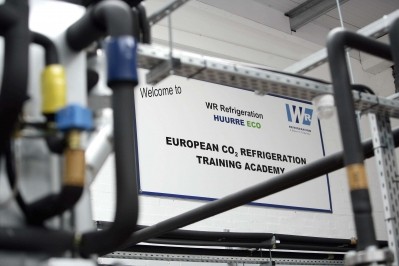Refrigerant gas rule changes threaten small processors
Many manufacturers risk stumbling over new restrictions on the use of ozone destroying hydrochlorofluorocarbon (HCFC) refrigerant gases, which take effect at the start of 2010, a refrigerant gas specialist has warned.
Most large retailers and cold chain logistics firms were already using alternatives to R22 refrigerants, production of which is being phased out, said BOC refrigerants marketing manager Matt Walmsley. But many smaller manufacturers still used cooling and refrigeration systems that made use of these gases, he warned.
From January next year production of virgin R22 will no longer be possible and only recycled R22 will be allowed to be used. Under new EU laws R22 will be completely phased out in 2015. But too few users of R22 had yet to install replacement systems, said Walmsley.
Alternative systems make use of less environmentally damaging hydrofluorcarbons (HFCs) or systems based on the use of natural refrigerants such as ammonia or carbon dioxide.
“The food sector is most impacted by this phase out,” warned Walmsley. “There is apathy out there.” But he admitted one of the disincentives was the price of alternatives, which were around five times that of R22. For this reason some users were buying supplies of R22 now, ahead of the costs rising, he added.
BOC is talking to several large own-label food manufacturers, chicken processors and foodservice companies about adapting their systems to use more environmentally friendly alternatives.
Its latest work was with contractor Concept Cooling Services at IBL Coldstores, Knowsley near Liverpool to replace the refrigerant in its existing equipment with an HFC alternative, R422A, called Isceon MO79. An additional benefit has been a 17% reduction in energy consumption.
Research conducted by the Carbon Trust in 2005 showed that some 350 food and drink companies, representing 70% of those surveyed, were still using R22 refrigerant gases.
According to Walmsley, retrofitting to replace R22 refrigerant systems with HFCs could be achieved at just 10% of the cost of installing a completely new system. “You can do it at a fraction of the costs relatively straightforwardly.”
However, he said many manufacturers were leaving it late to embark upon the conversion required. That meant they could face shortages of available contractors to carry out the work should they decide to carry out the work at a later date.
Equally they could face difficulties and rising costs in finding supplies of “recovered” R22 should their existing systems break down, he added. Around 12% of R22 used in the UK is recycled.
“It’s a high risk strategy,” claimed Walmsley. “If your refrigeration plant goes down and your contractor can’t get hold of R22, what do you do?”












